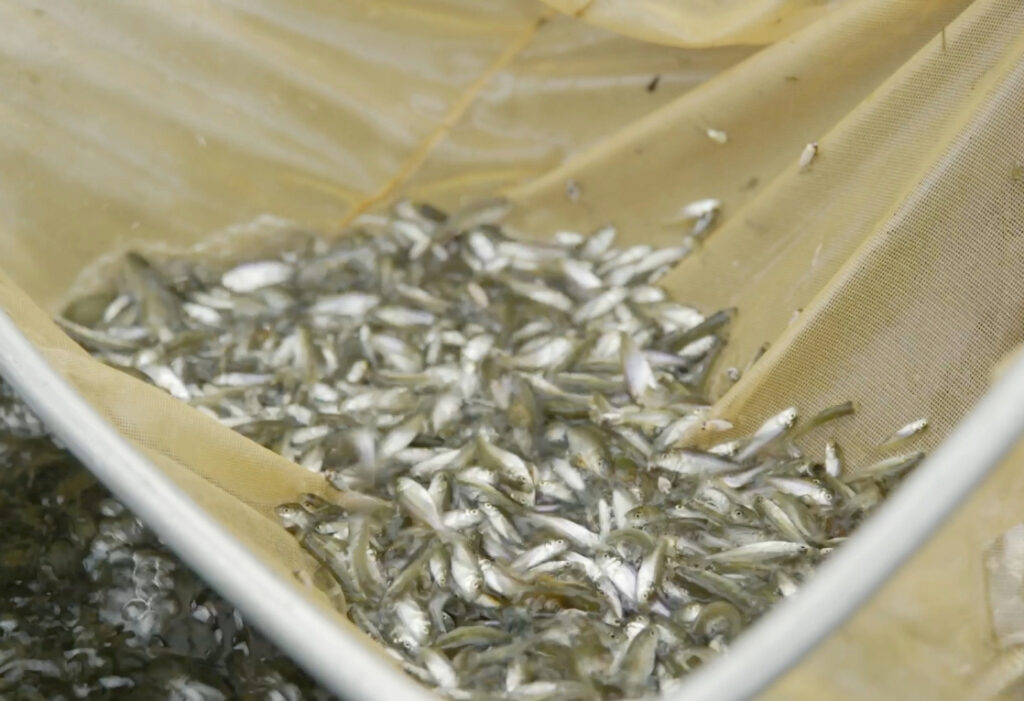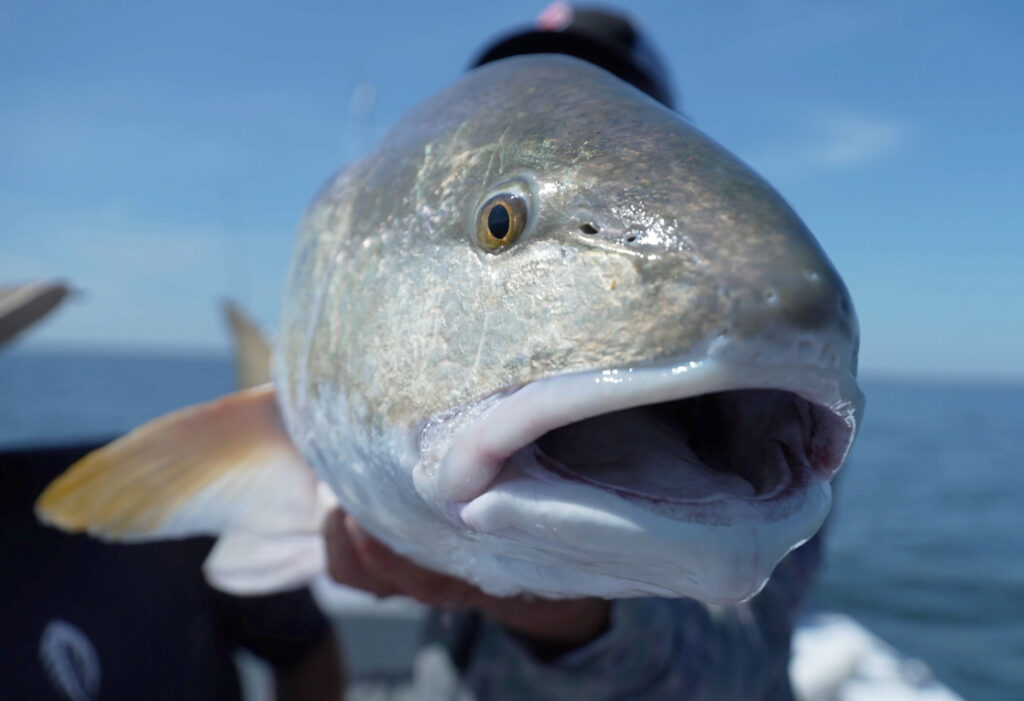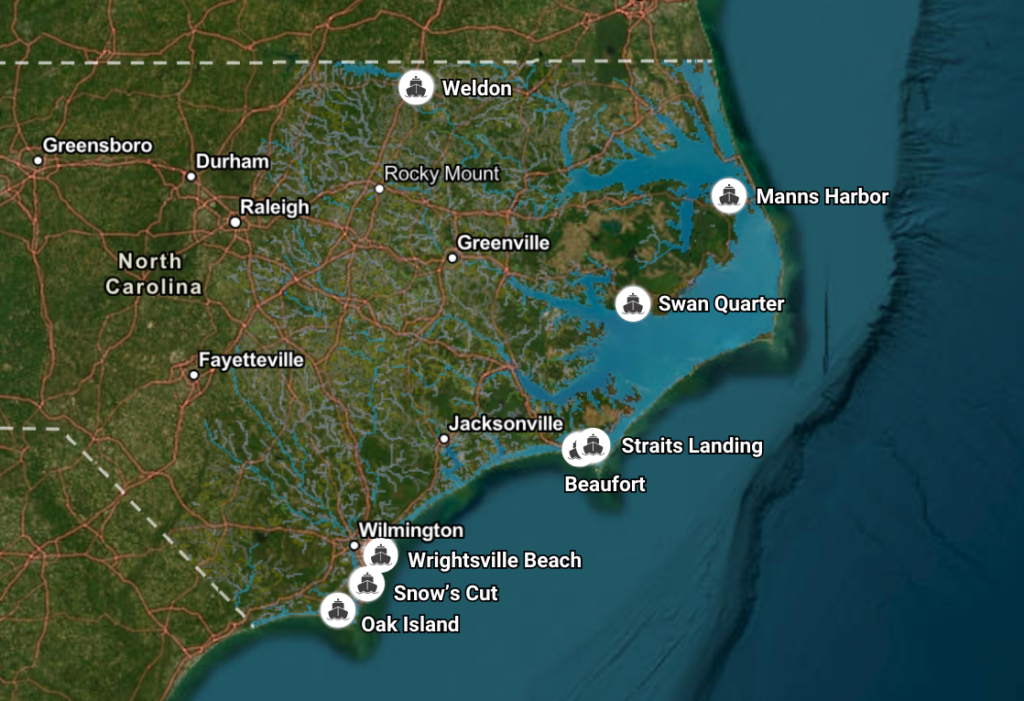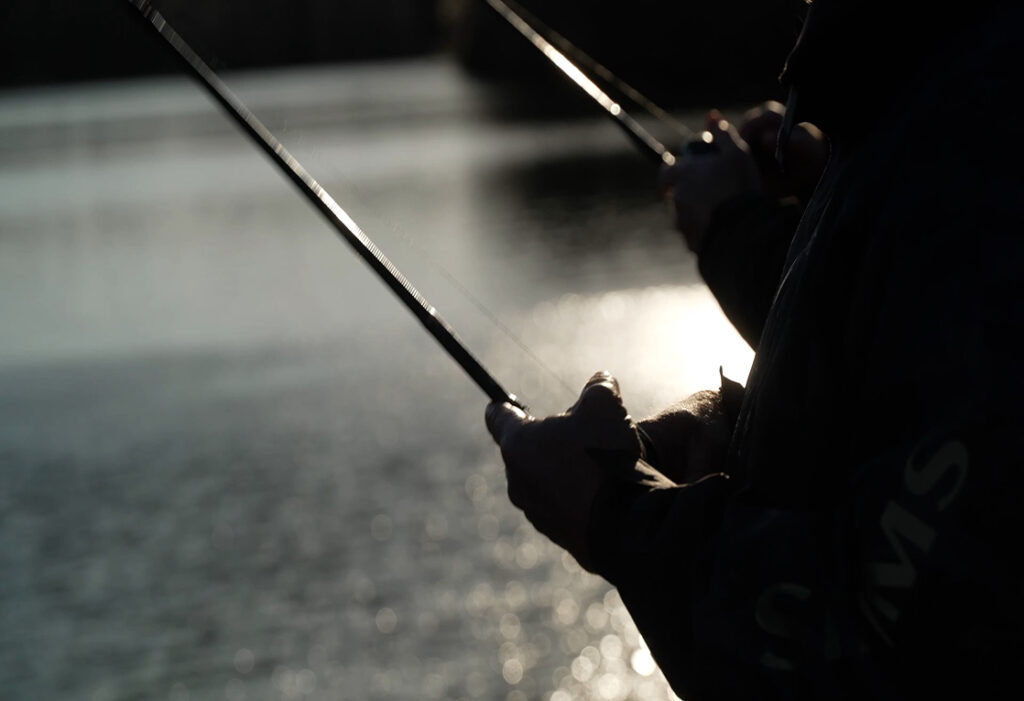The North Carolina Department of Environmental Quality’s Division of Marine Fisheries and NC Wildlife Resources Commission are working cooperatively on an aggressive stocking plan to supplement recruitment of the Albemarle Sound/Roanoke River Striped Bass population that began in 2023.
With financial support provided by the Marine Fisheries Commission Conservation Fund and the NC Marine & Estuary Foundation, 150,000, 5- to 8-inch Striped Bass will be grown at the Edenton National Fish Hatchery and released into Albemarle Sound this November and December. Previously, nearly 1 million, 2- to 4-day-old, Striped Bass fry were stocked on May 6 by Edenton National Fish Hatchery.
Additionally, through NC Wildlife Resources Commission’s Watha State Fish Hatchery, 1.5 million fry were stocked in April of this year and an additional 500,000, 1- to 2-inch, juvenile Striped Bass were stocked into Albemarle Sound in early June. This effort was funded by the NC Wildlife Resources Commission and the NC Marine & Estuary Foundation.
“This public-private partnership has lots of moving parts and we are pleased to be able to financially support these important restoration efforts,” remarked Chad Thomas, Executive Director of the NC Marine & Estuary Foundation.
“These stockings will help bridge the gap during a period of low abundance by adding fish to the system to increase spawning potential and give anglers fish to catch, said Ben Ricks, Coastal Region Supervisor for the NC Wildlife Resources Commission’s Inland Fisheries Division. “We are also investigating the sources of this population decline very aggressively. The Roanoke/Albemarle Striped Bass population is the only naturally reproducing population of Striped Bass in North Carolina and is a precious resource to the state.”
For the first year ever, there will be no Striped Bass harvest season in the Albemarle Sound and the rivers and creeks that flow into it, such as the Roanoke and the Chowan rivers. The estimated numbers of adult fish returning from the Atlantic Ocean to spawn in the spring have not been this low since the mid-1980s when the stock was considered collapsed.
The reason for the current state of the population is below-average natural reproduction, according to Charlton Godwin, Biologist Supervisor with the Division of Marine Fisheries.
“Beginning in 2017, we have observed a troubling pattern of poor or below-average spawning success in the Roanoke River,” explained Godwin. “This string of failures has resulted in low abundance of spawning females returning to the system each spring.”
While anglers may see early returns from these stocking efforts by way of improved catch rates of smaller fish, the primary objective is to see the fish grow to spawning size beginning at age 3 for the males and age 4 for the females.
“The goal of the restoration program is to have these hatchery fish contribute to the spawning stock and lead to a good natural spawn,” Godwin adds.
“We applaud our two fisheries agencies for their commitment to restore this fishery,” Thomas remarked. “Recovery is critical not only to the recreational anglers and the commercial watermen, but to each town in northeastern North Carolina that depends on the economic boost that this fishery provides.”
Click here to watch our 2023 Striped Bass Stocking video.





